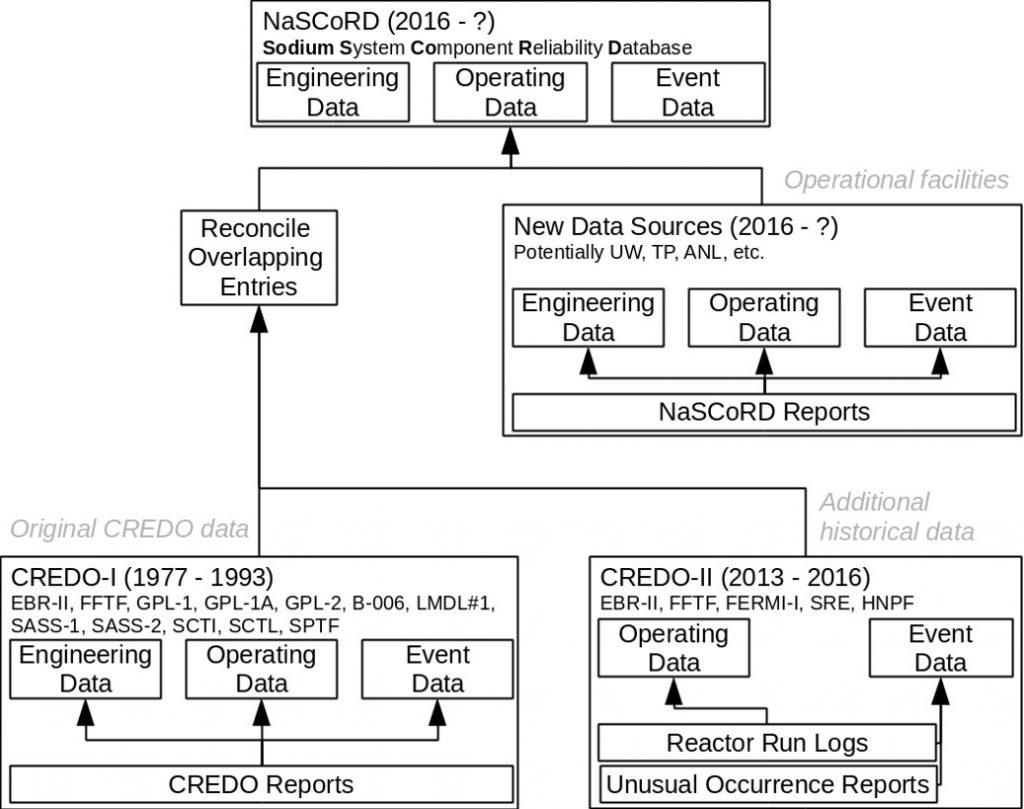Yesterday Informing Tomorrow
Introduction
This database was developed as part of a United States DOE Nuclear Energy Advanced Reactor Technologies program. The project’s mission is to re-create the capabilities of the legacy Centralized Reliability Database Organization (CREDO) database. The CREDO database provided a record of component design and performance documentation across various systems that used sodium as a working fluid but was lost by its US custodian in the 1990s. Raw data of US origin was only recently recovered from the Japan Atomic Energy Agency (JAEA) with whom the US had established a joint database. This NaSCoRD database uses reconstructed CREDO data (CREDO-I) with reliability information sourced from operational documents, unusual occurrence reports, and design documents, called CREDO-II.
Capabilites
CREDO-I, CREDO-II, and Sodium System Component Reliability Database (NaSCoRD) will immediately benefit sodium system designers who can extract engineering, operational, and safety insights from these data sets. The ability to examine the failure modes for sodium components and the environments that led to multiple and repeated component failures will allow for future sodium loop and sodium reactor designers to leverage the expansive legacy of domestic sodium reactor operations. The future expansion of NaSCoRD to new facility data sources provides the domestic industry with the best opportunity to develop a broad database to support future Probabilistic Risk Assessment (PRA) applications.

Database Access
To allow the domestic sodium industry access to this data, Sandia has established a controlled access website for users to directly explore SQL reports. Access to NaSCoRD can currently be requested through the DOE-NE ART sodium reactor program manager. Request access by e-mailing NaSCoRD@sandia.gov.
Resources

NaSCoRD SAND Report Creation of the NaSCoRD Database.
(3.97 MB PDF)
